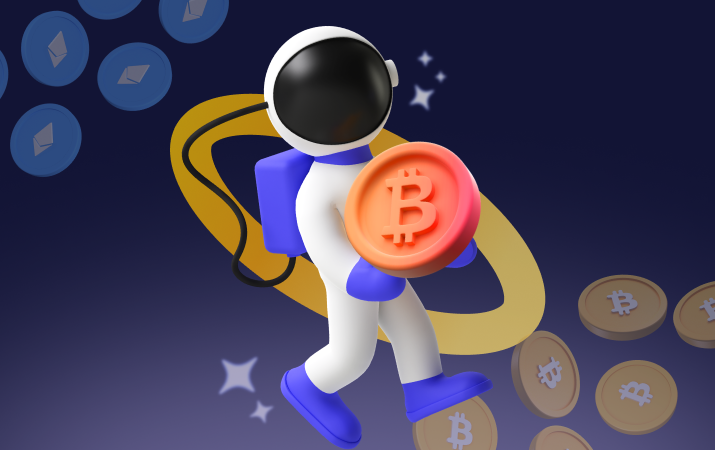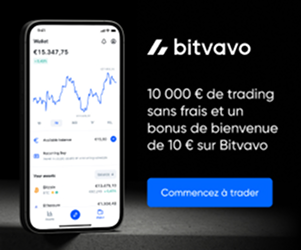Blur is an ecosystem offering collections of NFTs. However, it is not like the others because, as the following sections show, it is surrounded by a very rich environment.
Overview
As the Blur Foundation states in its documentation, it aims to facilitate governance and community participation in the Decentralised Autonomous Organisation(DAO), and to support contributors to the development and growth of the BLUR ecosystem, including aggregators and the Blend lending protocol.
The BLUR token gives the community control of the DAO, and enables it to play an active part in governance.
As mentioned in the 1st paragraph of this overview, Blur is the governance token for the Blur ecosystem, based on Ethereum's ERC-20 standard.
Blend is the name of the peer-to-peer, perpetual lending protocol for NFTs, developed and powered by BLUR.
How the Blur ecosystem works
The governance process
The governance process is divided into 3 phases: Search Forum, Instant Vote and Proposal Creation.
All the community's ideas are first published on the research forum. For a minimum of 7 days, as many members of the community as possible can comment on the subject, both improving it and objecting to it.
Once the proposal has been accepted, it's time for an instant vote. Community members who have delegated a minimum number of tokens (100,000 BLUR) can make proposals, which will be subject to a 14-day voting period.
At the end of this period, if the proposal receives the support of the majority of participating votes, with a minimum of 30 million Blur votes, the community can proceed to a chain execution vote, with a voting deadline of 2 days.
The in-chain voting system, as opposed to the out-of-chain system:
- Does not require a trusted third party to count votes
- Allows accepted proposals to run automatically
- Improves the approval process for high-stakes votes
Following a successful instant vote, the final phase involves creating a blockchain proposal with code to execute. Chain proposals must be made by a community member with the minimum number of delegated tokens.
Once these proposals have been made, voting will last for 14 days. If a proposal receives majority support with a minimum of 120 million BLUR votes, then any member can queue its execution (2 days delay), then execute the proposal.
The power of governance
As the community manages governance, it has the power to control the accumulation and distribution of the value of Blur protocols, define the market protocol fee rate and set the lending protocol fee rate for lenders and borrowers.
Every 6 months, members have the option of increasing the market protocol fee rate by up to 2.5%. They can also issue treasury subsidies.
Governance can also fulfil these functions in a chain (non-exhaustive list):
- Setting the lockout delay
- Defining the minimum quorum
- Cancel time limit executions
- Defining the proposal threshold
- Define the voting period
- Setting the voting deadline
Committee management
In order to rationalise certain operations, some of the DAO's activities are governed by different committees. They gradually transfer their functions to governance over time. These include the Safety, Market and Incentive committees.
The Safety Committee ensures that the community strictly follows the governance process as described. For example, it will reject proposals that do not meet the criteria built into the process.
The Market Committee facilitates upgrades to BLUR, aggregation and loan market contracts. It ensures that policy decisions on dynamic issues such as fees are implemented.
TheIncentive Committee is responsible for stimulating, inspiring and encouraging BLUR users. It can use up to 10% (300 million BLUR) of the initial offer for this programme. It can also lend part of the budget to provide liquidity to the BLUR market.
The NFTs Blur marketplace
This platform is tailored and designed for investors, in particular NFT collectors. Artists are unlikely to find much in it.
The advantages of using the platform include
- Allows NFTs to be listed, not minted (created)
- Offers a reward of Blur tokens for every trade made on the platform. This has enabled the platform to overtake Opensea in terms of trading volume over the last 30 days (according to DappRadar).
- Regularly offers interesting airdrops
- Offers a rich and varied user experience
- Prone interface divided into 'Trader' and 'Collector' modes
- Different levels of visual overview of NFT's
Token savings
Allocation
The initial offer is 3 billion tokens available over a period of 4 to 5 years.
years, with the vesting period and breakdown as follows:
- 51% to members of the Blur community
- 29% to the main contributors, over a vesting period of 4 years
- 19% to investors with vesting, over a 4-year period
- 1% to advisers with vesting of 4 to 5 years
Community treasury
12% (360 million) of tokens could be immediately claimed by all Blur NFTs traders, on any market, between 19 October 2022 and 14 February 2023; can still be claimed by historical Blur users and creators.
The breakdown over 4 years is as follows:
- 40% in the first year
- 30% in the second year
- 20% the following year
- 10% to finish
Even if it can quickly confer superpowers on a minority holding a very large number of tokens, the Blur ecosystem allows its community to fully decide how it operates; allows amateur users of Blur NFTs to add to their collections; allows its contributors, creators and certain investors to benefit from a number of tokens over a period defined in advance.
Although there is still room for improvement, it can be said that, as it stands and compared with the competition, it is fairly complete.







